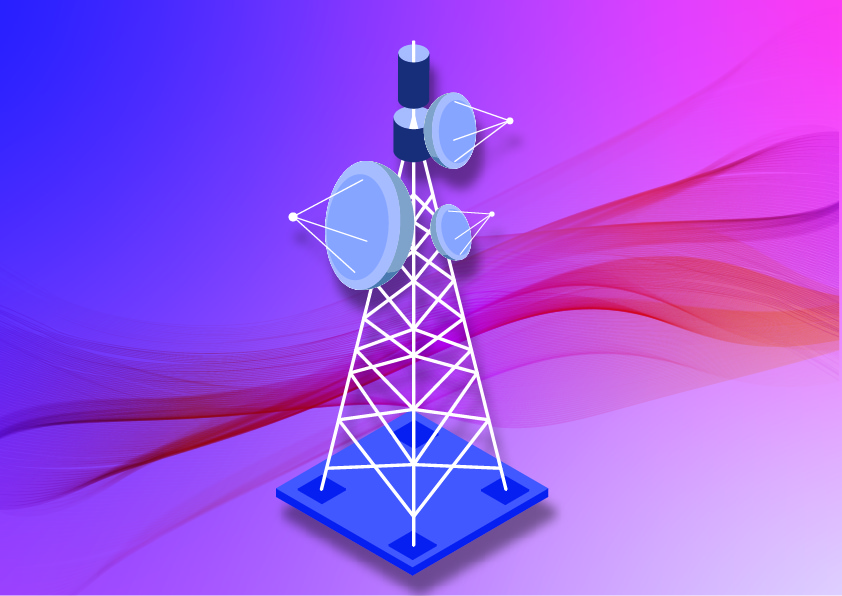The Telecom sector has evolved to a larger extent. Long back, the sole purpose of the tele sector was to render voice communication services. With the prevalancy of smartphones, there arrived a huge rise in customer data. And the evolution continues till date with the invention of devices that directly communicate with humans.
Currently, telecom companies have to look over greater things – engage with enormous data, provide a speedy network connection, manage competition, maintain customer satisfaction, and so on. With rising demands, struggles also have increased for telecom companies.
According to a recent McKinsey survey of 50 senior executives (CxOs) from telco firms throughout the world, 77% have undertaken more than five business-building efforts in the previous ten years.
Some of the underlying trends and technologies that will be demanding to meet up with the changing and expanding telecom Industry are discussed here.
5G
The next great improvement for telecommunication networks and gadgets is 5G technology. It offers significantly faster speeds than earlier cellular broadband network standards with lower latency.
Sateliot is a Spanish satellite telecom operator that combines satellite and terrestrial networks using 5G protocols to provide global continuous IoT connectivity. Satellite constellations operate as cell towers for IoT devices which makes their hardware require no device customization. Furthermore, satellites manage messages in a secure and transparent manner, assuring the security of clients’ data.
AI
AI is turning out to be critical for telecommunications firms’ network optimization and predictive maintenance. Furthermore, AI enables telcos to derive relevant business insights from massive amounts of data.

From Telefónica’s perspective, AI enables them to better understand their clients, allowing them to relate to us more naturally and effortlessly, resulting in a new level of trust. Telefónica’s AI-powered digital assistant, Aura, is already changing the way customers engage with the company and manage their digital lives. It will turn data into knowledge in order to provide clients with customized experiences that are natural and easy to use, as well as transparency and control over their personal data.
RPA
Given the huge number of clients that every telecom firm contacts on a daily basis, human error is bound to occur at any stage of the encounter. Repetitive and rules-based operations are not only more efficient but also more accurate when business processes are automated using Robotic Process Automation.
By 2022, Gartner predicts that 90% of large enterprises around the world will have implemented RPA in some form, as they seek to digitally empower core business processes through resilience and scalability while recalibrating human labor and manual effort.
Deutsche Telekom wants to strengthen process automation and digitally support the customer care function. The company has gone above and beyond most European companies in establishing an army of over 2,500 RPA bots to automate and enhance manual procedures, resulting in annual savings of almost 100 million euros.
Cloud-Based Solutions
When we think of a telecommunications business, we typically picture a large network of towers, transmitters, data centers, cables, and wires, among other things. Factually correct, but an increasing number of telcos are opting to convert much of their physical infrastructure into digital, cloud-based services.
According to Gartner analysts, by 2025, more than 85% of enterprises will have adopted a cloud-first strategy and will be unable to properly execute their digital objectives without the use of cloud-native architectures and technologies. Thus, Cloud plays a major part in modernizing telecom networks and services.
Nokia released its own machine learning-based AVA platform, a cloud-based network management system to better manage capacity planning, as one of the most notable developments. It can also forecast service degradation at cell sites up to seven days ahead of time.
WiFi 6
WiFi 6 refers to a WiFi network with a longer range that improves network performance, connects more devices, and allows for faster communication. It can boost network capacity, reduce latency, and provide many chances for improving savings and income with the adoption of new technologies.
WiFi 6 can be used by telecom operators to find new ways to optimize traffic across access networks. It will benefit areas such as entertainment, telemedicine, remote jobs, and education, as well as locations where fiber is prohibitively expensive to reach.
WiFi 6 will also deliver improved signal strength when combined with 5G technology, enabling IoT adoption and supporting always-on devices. It reduces resource congestion in high-capacity networks, allowing data to flow seamlessly between IoT devices.
Telefónica has started rolling out the Smart WiFi 6 Amplifier, a new product that is unlike anything else on the market and combines the new WiFi 6 technology (the newest WiFi generation).
The Smart WiFi 6 Amplifier can be used as an access point to build a WiFi 6 network across the house to replace the existing router’s WiFi signal, or as a repeater to extend the user’s WiFi connectivity to new places.
Features
- Up to 4 Gbps connection speeds (5 times faster than WiFi 5)
- Improved range of coverage that can be expanded by more than 30%.
- More efficient management of linked devices means up to four times more data flow on the device at the same time.
- Optimization for IoT (Internet of Things) devices, ensuring that they consume the least amount of power possible.
Conclusion
Many telcos struggle with lower margins in this era where customer satisfaction is given utmost importance and data maintenance is large. To stand out from the competition, it is thus essential for Telecom companies to be updated and aligned with the trending technologies and advancements.
